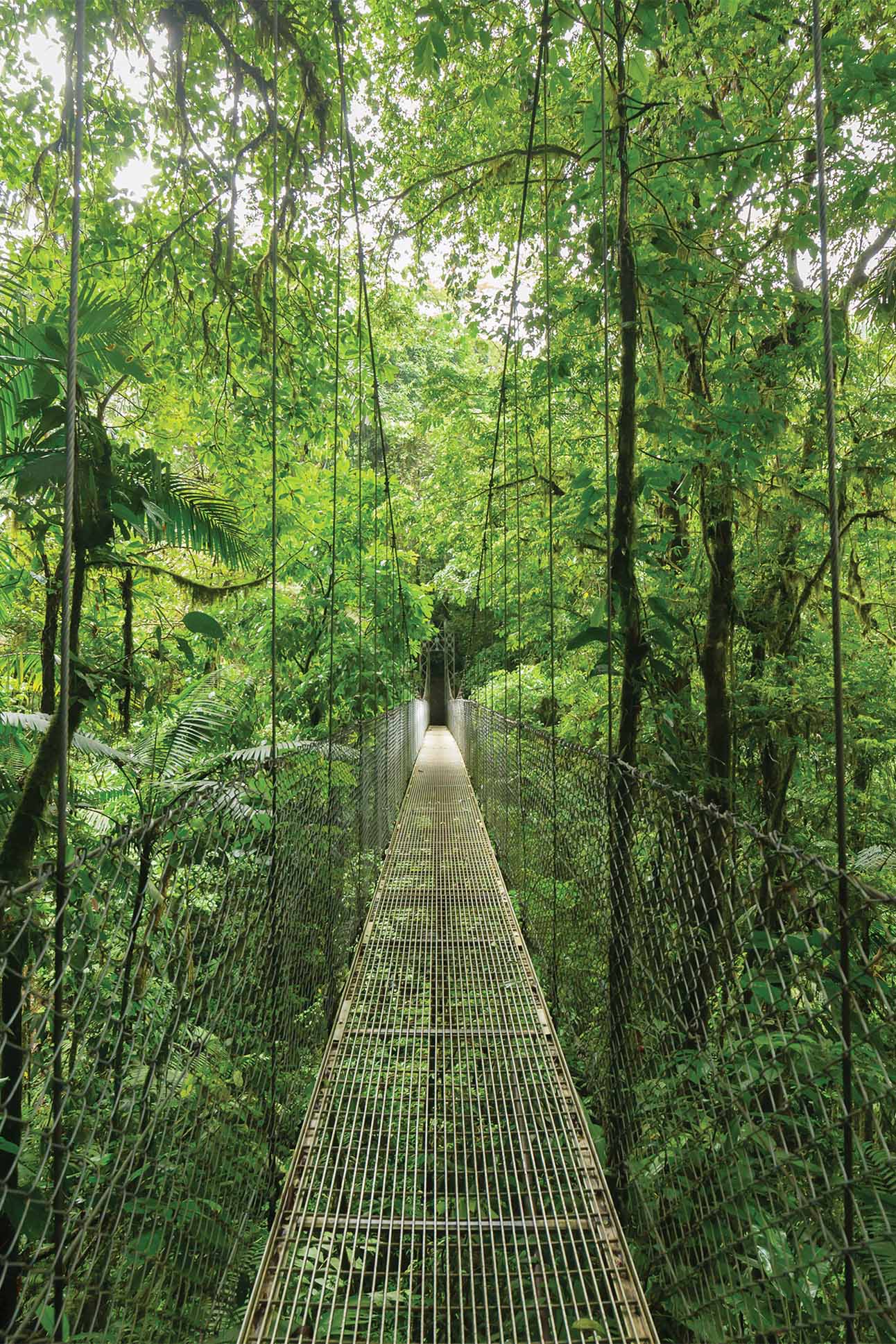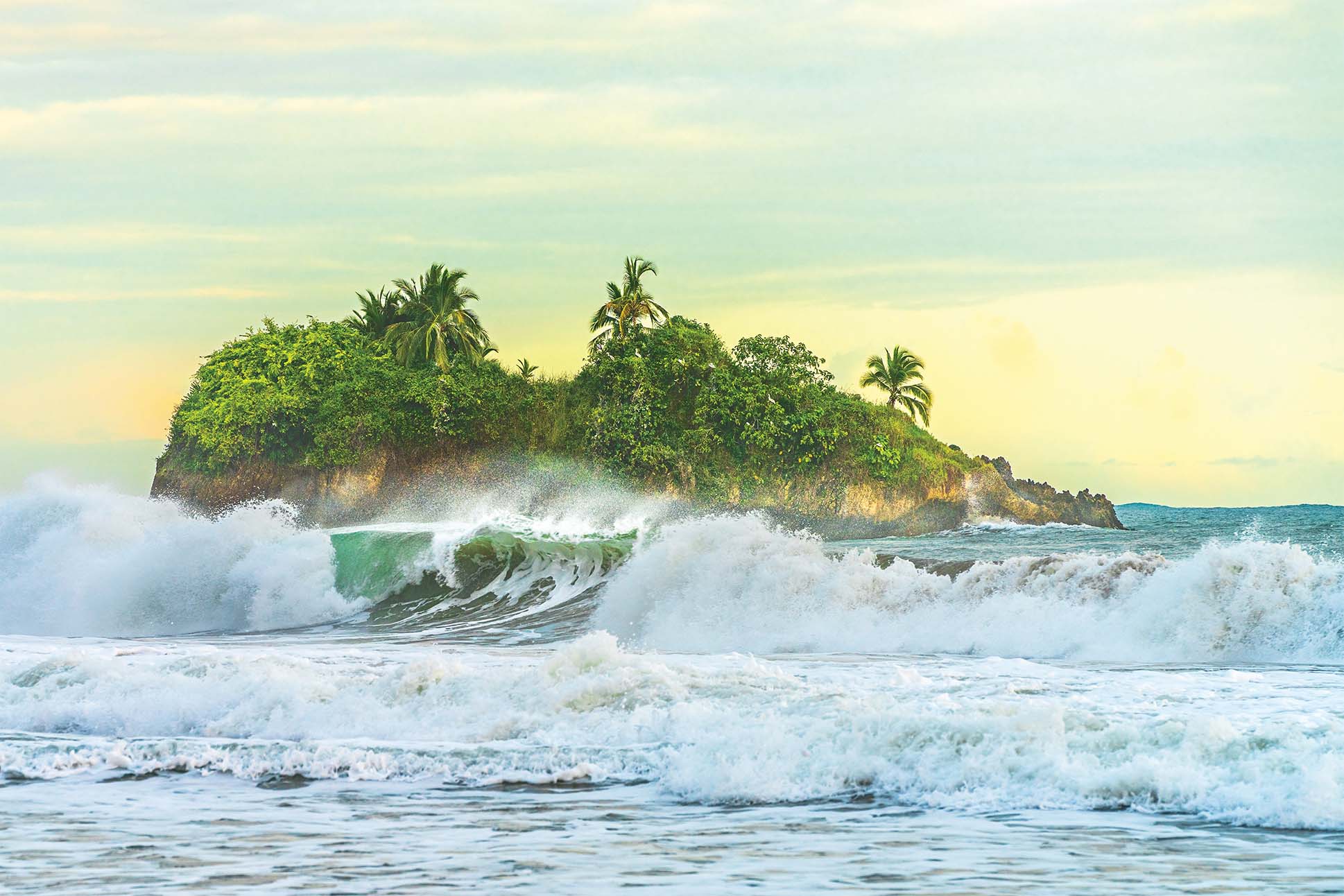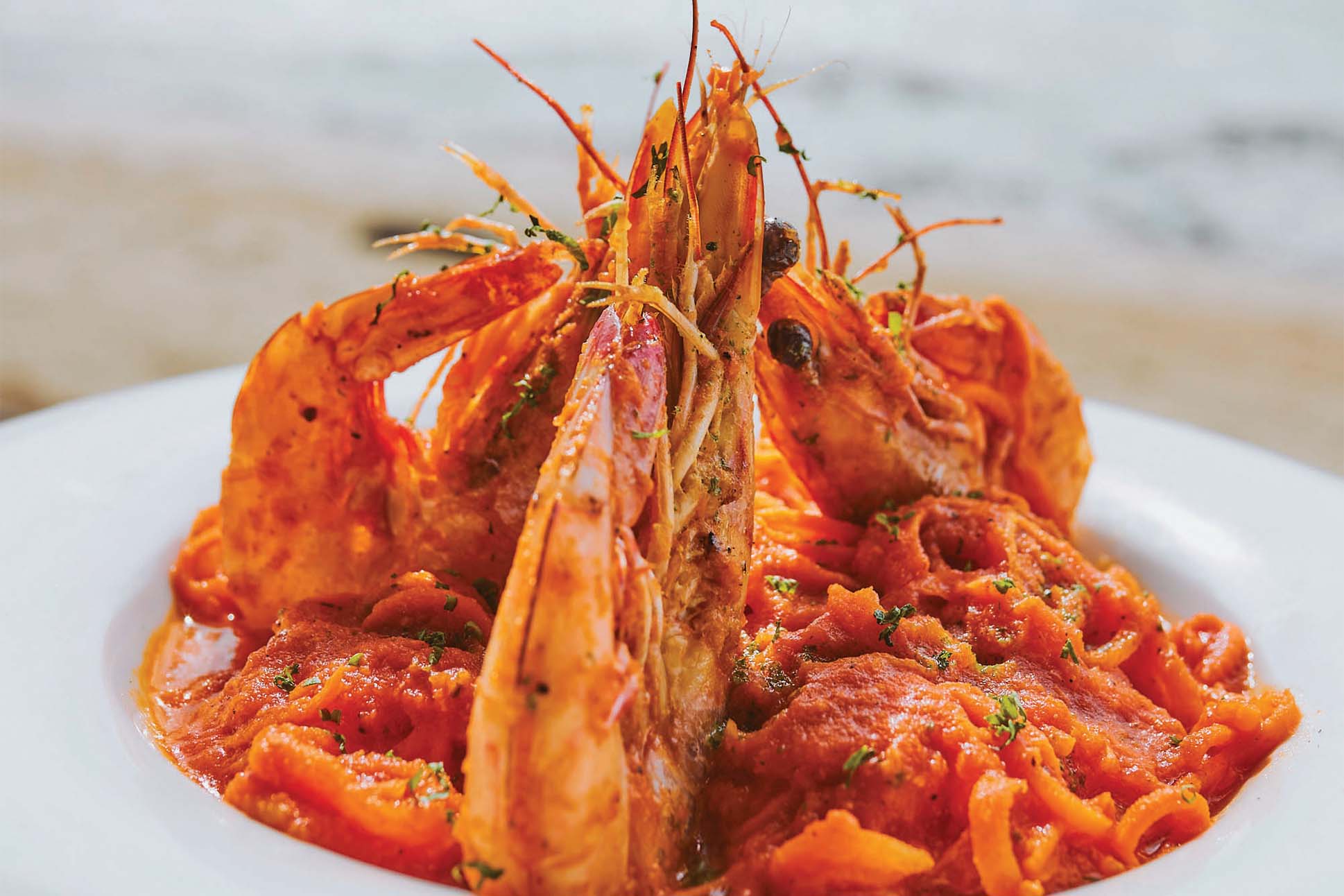By Jen Murphy
Barely the size of Denmark, Costa Rica covers 0.03 percent of the earth’s surface, yet harbors around 5 percent of the world’s species. That remarkable biodiversity, which includes see-to-believe species like glass-winged butterflies, red-eyed tree frogs, basilisk lizards, and two- and three-toed sloths, is protected, in part, by the lure of ecotourism.
In the late 1980s, the Costa Rican government implemented strict policies that promoted reforestation and private conservation in response to a surge in visitors. Today, the country remains a leader in sustainable practices. One-quarter of its land is protected as parks, refuges, and reserves, and approximately 30 percent of its marine area is preserved.
The practically untouched environment can be witnessed on immersive adventures rooted in the country’s pura vida lifestyle—and every region offers its own unique experience.
Guanacaste
Endless coastline, rare birdlife, and five-star amenities
Situated in the northwest, Guanacaste boasts nearly 400 miles of coastline and dry, sun-drenched weather most of the year. Of its 70-plus beaches, Playa Conchal stands apart for its pink, crushed-seashell sand and tranquil waters.




Inland, Rincón de la Vieja National Park stretches over 34,000 acres, encompassing two volcanoes, more than 30 rivers and streams, and steamy hot springs. A bird-watching hot spot, it’s home to more than 300 species, including blue-crowned motmots and white-fronted parrots.
After a day of activities, the newly opened Nekajui, a Ritz-Carlton Reserve Residence welcomes with Michelin-starred chef Diego Muñoz’s modern Peruvian flavors. The 27,000-square-foot spa is an oasis of calm, with treatment cabanas suspended in the treetops and Latin America’s largest hydrotherapy pool. When night falls, boat to remote bays at El Mangroove, Autograph Collection Residences, to watch bioluminescence put on a natural light show.
The Northern Region
Soar through the treetops and soak in volcanic-fed springs
With its magical cloud forests, turquoise waterfalls, and majestic Arenal Volcano, Costa Rica’s landlocked northern region feels like finding Shangri-la.
Cloaked within the jungle of Tenorio Volcano National Park is the otherworldly Rio Celeste waterfall, a 100-foot, electric-blue cascade that spills into a sparkling river. Visitors can get their adrenaline fix by tubing a 2.5-mile stretch of gentle rapids or ziplining above the crystal-clear waters. A must for nature lovers, Monteverde Cloud Forest Biological Preserve holds half the country’s flora and fauna, including the elusive resplendent quetzal and some 500 species of orchids. In adjacent Selvatura Park, spot 14 species of hummingbirds while traversing a suspended walkway through the mist-tinged, cloud-forest canopy.


For dinner with a view, make a reservation at San Lucas Treetop Dining Experience, where eight glass-walled dining cubes are suspended more than 50 feet above the jungle. The best way to conclude a trek in Arenal National Park is with a soak at Eco Termales, one of the many hot springs complexes fed by Costa Rica’s most active volcano.
The Caribbean Coast
Colorful coral reefs and AfroCaribbean culture
The jungle-meets-ocean scenery of the less trodden east coast is infused with a distinctive AfroCaribbean vibe. Expect to hear the local patois spoken alongside Spanish, dance to calypso music, and dine on Jamaican-influenced cuisine like saltfish fritters.
In the northern part of the region, Tortuguero National Park’s patchwork of canals, mangrove forests, lagoons, and wildlife-rich jungle often draws comparisons to the Amazon. The name is a nod to the endangered green sea turtles that nest on
its shores from July through October.
In the south, the laid-back beach town of Puerto Viejo attracts a bohemian surfer set with its barreling waves, black-sand beaches, and casual cafes. Salsa Brava showcases the region’s signature Caribbean influence with a menu of dishes like rondon, a rich seafood stew, plus AfroLatin dance classes.
For wildlife enthusiasts, the nearby Jaguar Rescue Center rehabilitates and rewilds the threatened cats, and Cahuita National Park protects a 600-acre reef teeming with marine life and 35 types of coral.




The Nicoya Peninsula
A haven of wellness, wildlife, and surf-swept beaches
The northwest is celebrated as one of the world’s blue zones, where people live longer, healthier lives (Nicoyans are more than twice as likely as people in other regions to live to age 90 or more). The low-key beach towns that line the 75-mile coast are meccas for wellness, yoga, and nature bathing.
Hire a boat and snorkel the crystalline waters around Pink Sand Island or visit the nearby Ostional Wildlife Refuge. From July to November, thousands of olive ridley turtles can be seen laying eggs on its protected shores.
Tamarindo is a bucket-list surfing destination where experienced riders can hit legendary waves like Witch’s Rock, while beginners can practice their pop-ups at Playa Grande. For après-surf, head to Pangas Beach Club. The local order: ceviche and an ice-cold Imperial lager.




